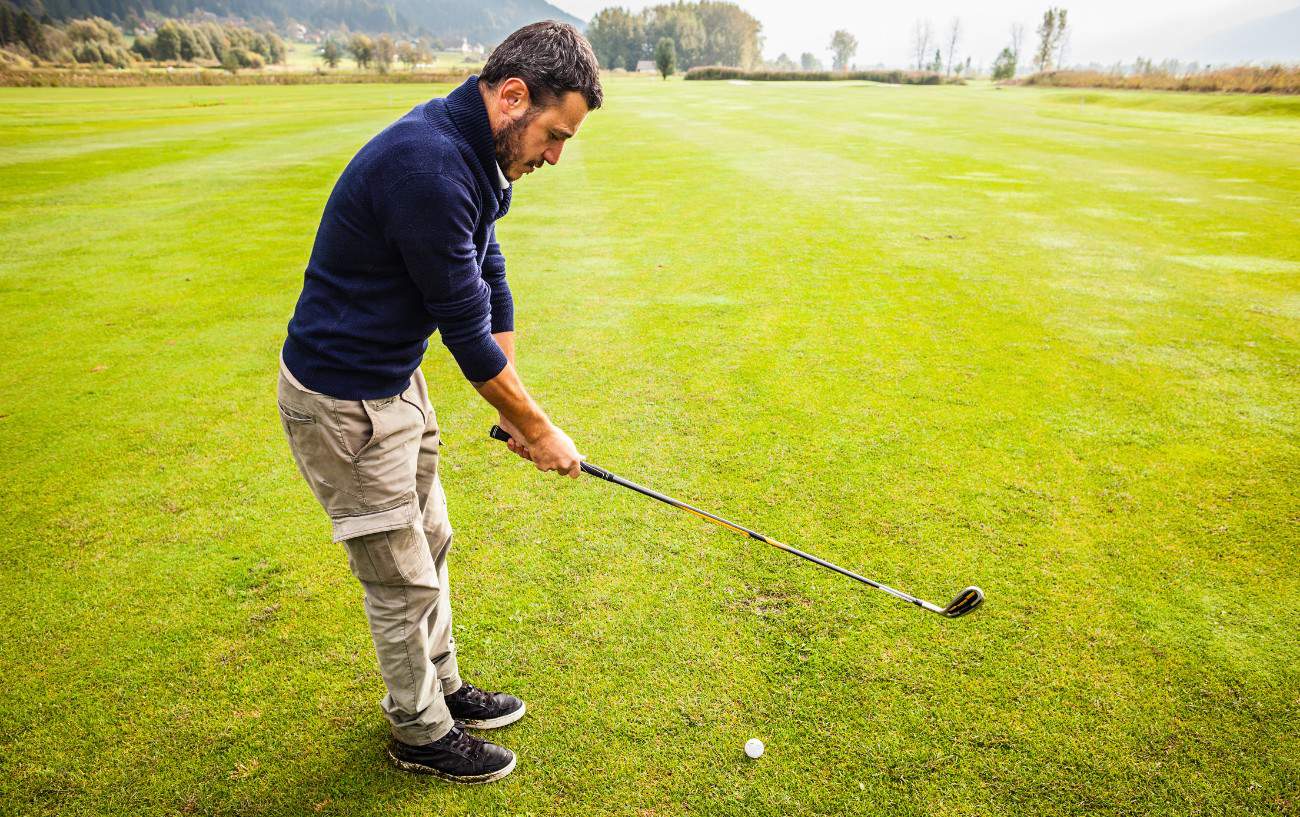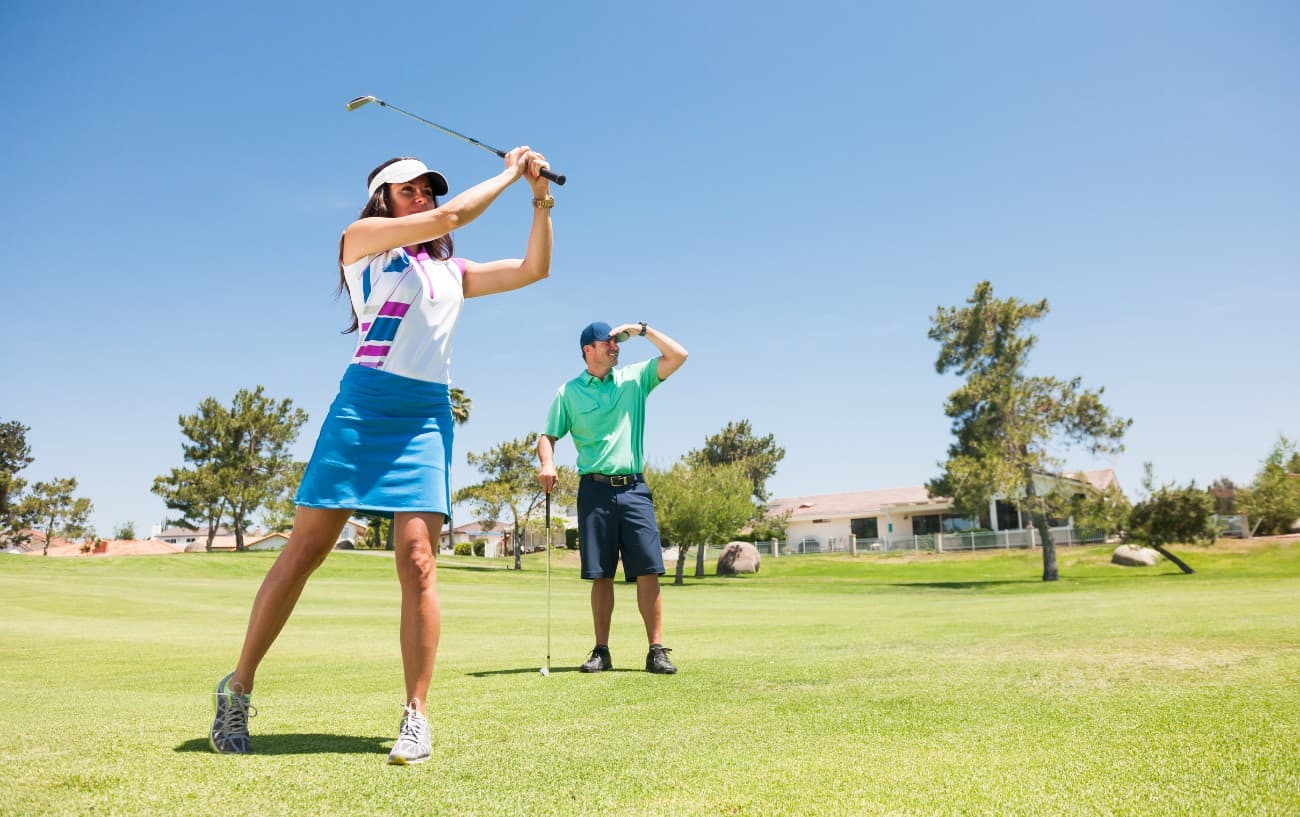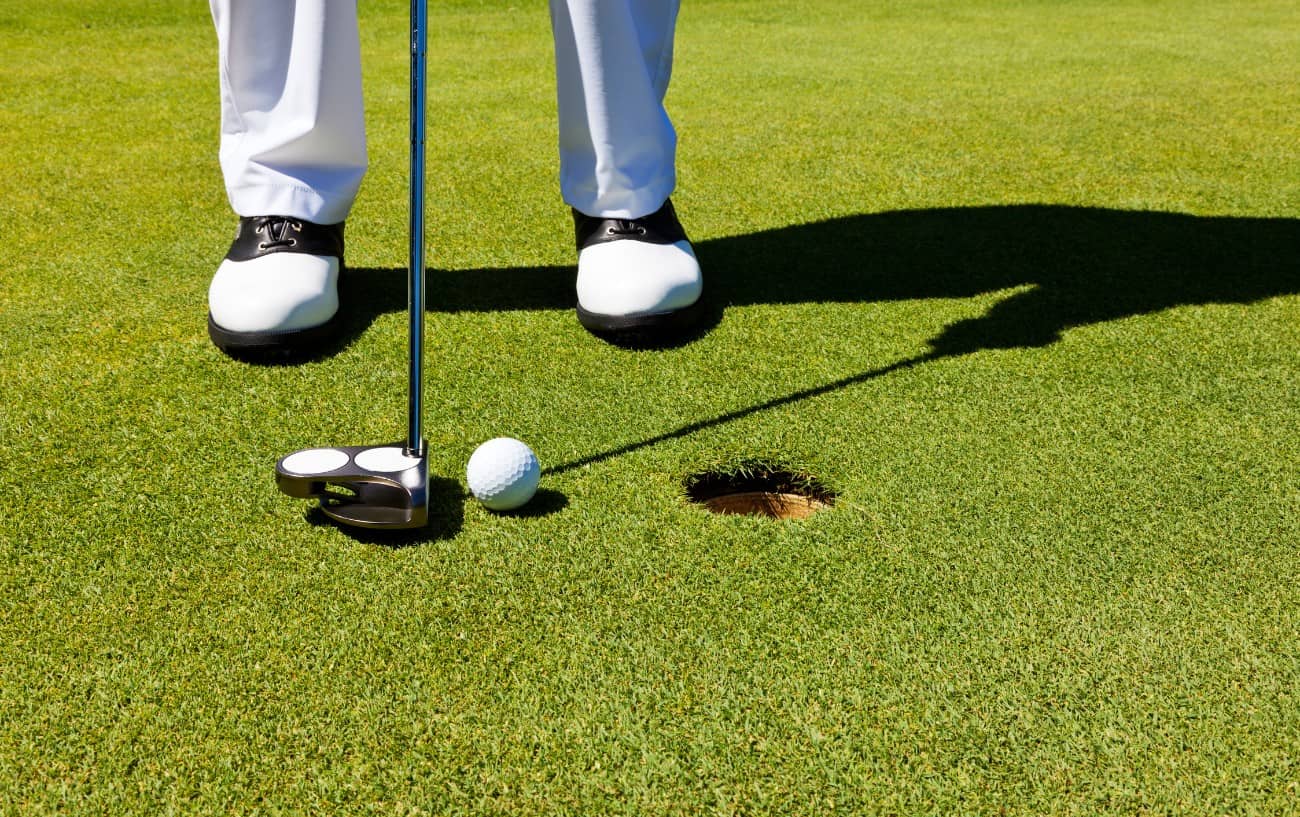The arms and upper body tend to steal the show in a golfer’s swing, yet it’s your foot placement that provides the crucial foundation to enable you to pull off that effortless looking (and feeling) shot.
In the game of golf, foot placement can have a huge influence on the way you play.
Too often an incorrect stance will be the main reason a golf shot is made more difficult than it needs to be.
Where you position your feet when you come to play each ball will affect how naturally all the other parts to your swing unfold.
No matter the level of golf, you’ll always need to give yourself the best chance at making a great shot, before any kind of swing is made.

This comes down to mastering the art of the setup: The space that you offer to your swing and the motion you enable your body to make which, you guessed it, stems from the placement of your feet.
Understanding how your golf foot placement influences the shots you make will be key in ironing out those awkward, inconsistent swings next time you’re on the course.
Let’s break down all you need to know about golf foot placement and its role in your swing!
Standing In Your Setup
The setup is every golfer’s first main consideration when it comes to performing the golf swing ritual.
You’ve gauged the distance, selected the club and now you’re ready to address the ball.

If there’s one part to the golf swing a player can take the time to have complete control over, it’s the setup.
Foot placement is the defining variable in controlling key aspects to the setup like:
- Aim
- Stance
- Standing Proximity
- Ball Position
Your golf foot placement provides the foundations for the golf swing: Everything you see in the upper body is influenced from the ground up.
Though the act of standing seems like the relatively straightforward part of golf, if your golf foot placement is unbalanced, your whole swing could be at risk.
It’s important to recognize that each player’s stance may vary slightly – like with any sport, one person’s range of motion may be different from the next. It’s fine to make tweaks to the ‘model’ to find that personal level of comfort.
Your stance may also change based on the kind of shot in front of you and the type of club you’re holding, but we’ll get into this.

Here are some of the basics every golfer should be aware of when it comes to your golf foot placement.
Aiming
Your foot placement first and foremost will determine where you aim the ball.
This is sometimes deceiving to gauge in golf since it’s one of the only times we’re required to aim at something when not directly facing the target. Not to mention external factors like wind and ball spin too.
Often you’ll think you’ve nailed your aim standing side on, when actually the trajectory line can be a whole other story!
The aiming setup typically begins by standing so that both feet are parallel to the target.

Sometimes it’s helpful to stand back and lay another club down just in front of your toes so you can ensure you’re confident your foot line is correct.
This is your squared stance, which promotes a conventional swing path that should send the ball straight with little spin.
Experienced golfers might opt to rotate their line of stance at aim in order to play a draw or fade shot.
An open stance at setup is used for a fade (left-to-right ball flight), where your feet turn out so they’re pointing slightly left of target relative to the ball and club face (for right-handed players).
Conversely, standing with a closed stance at setup, by pointing your feet slightly right of target, will create a draw (right-to-left ball flight).
Whichever stroke you’re trying to play, don’t underestimate golf foot placement!

Width Of Stance
To perform a strong golf swing, you’ll need to make a sturdy foundation. The width in your stance plays a key role in providing this.
In the golf swing, it’s important to accommodate the weight that gets shifted around the body.
Your feet play host to these shifts in weight and supply the balance and space offered to your swing.
So, how wide should the perfect golf foot placement be?
This depends on the club in question and the level of motion required to make the shot.

For wedges and irons, a shoulder-width apart is about right.
With drivers, golfers will tend to take a slightly wider golf foot placement in setup – about an extra step on either side of their iron setup. This is to accommodate for a slightly bigger club shaft and swinging velocity.
Chipping and putting can be more subjective arts, but typically, a slightly narrower golf foot placement – about a hip’s width apart – is optimal. This is because these shots take more precise control up in the shoulders and arms, and require less of the full body’s motion to make the stroke.
Where To Stand
There’s nothing worse than feeling like your swing is awkward or restricted because you’ve not allowed the right amount of space with your golf foot placement to make the shot.
Getting your standing proximity to the golf ball right can be a simple fix in achieving a natural and consistent contact in your strike.

How far should you stand from the golf ball?
Every golfer will have their own height and reach, plus the varying club shaft lengths will affect your golf foot placement from shot to shot. But the good news is there are a few fundamentals that each player can apply to help find that sweet spot.
For irons, to find your stance, begin by holding the club out in both hands and then tilt the upper body forwards until the club head meets the ground. The key is so that both arms hang freely, almost perpendicular to the ground, giving your shoulders optimal control over them.
Ensure some flex in the knees so that your posture feels athletic, ready to spring into motion. Once comfortable, hold this stance and take pigeon steps until your club addresses the golf ball.
A reference for the arms is to picture about a hand’s width of space between your lead thigh and hands.

For drivers, naturally the club shaft tends to be a bit longer and you’ll want to stand slightly further back to the ball, with less bend in the upper body. The arms hang a little further out vs the iron.
Your main goal with a driver is distance, so your stance should free up a bit more space in the body and arms to allow for a more powerful, lofted swing off the tee.
Standing too close to the ball will mean your legs are likely to get in the way of the swing.
Golfers will find they need to create that extra space by standing up on their downswing. You’ll lose that hard-earned posture and be using all hands and arms to take the shot.
If standing too far from the ball, you’ll stretch to find that extra reach and the hands and arms become locked, relying on the bigger muscles to make your turns.
Crucially, you’ll be losing the speed and power that comes with the whip created in the uncoiling of the downswing by standing too far away.

Flaring The Feet
Ever wondered why golfers adopt that signature duck-footed stance in their setup?
There are some key flexibility advantages a flared foot posture will offer to your game.
Typically, once set up parallel to the target, a golfer’s lead, and often trail foot will flare outwards so that the toes point at a slight angle (approx 15 degrees).
Positioning your golf foot placement in this way essentially creates more room and movement for the golf swing to operate.
Flaring your golf foot placement has a significant impact on the amount of flex allowed in the knees and hips, therefore influencing the range and ease in which your body can rotate through the shot.

- A flared lead foot will promote a stronger and easier to execute follow through past the point of impact in your swing.
- A flared trail foot benefits the scope for rotation in the takeaway and makes for a more comfortable position at the peak extension of your swing.
What happens if the feet aren’t flared?
If both feet remain dead straight, the limiting of your body’s rotation amplitude is going to affect your maximum potential for velocity and ultimately distance generated from your swing.
Flaring your golf foot placement is going to help you feel balanced through the takeaway and follow through, minimizing the chances of falling off your starting foot position.
Placing The Golf Ball In Your Stance

Finally, your golf foot placement will determine where the ball is positioned in your swing.
Where you sit the golf ball within your stance is vital in making a clean connection and fulfilling the appropriate potential of each club.
This is about finding the optimal point of contact between ball and club face in the journey of your swing.
A brief rule of thumb for where to place the ball:
- Wedges – Center of your stance.
- Drivers – Just inside the lead foot.
- Irons – Work your way forward from the center of your stance (towards the lead foot by about half an inch each time, the lower the number on the iron).
It’s important to make sure your stance around the ball is appropriate for the amount of loft on the club face in order for the ball to fly as intended.
Take confidence into your next round knowing your golf foot placement has given you the best shot at making that perfect swing!

